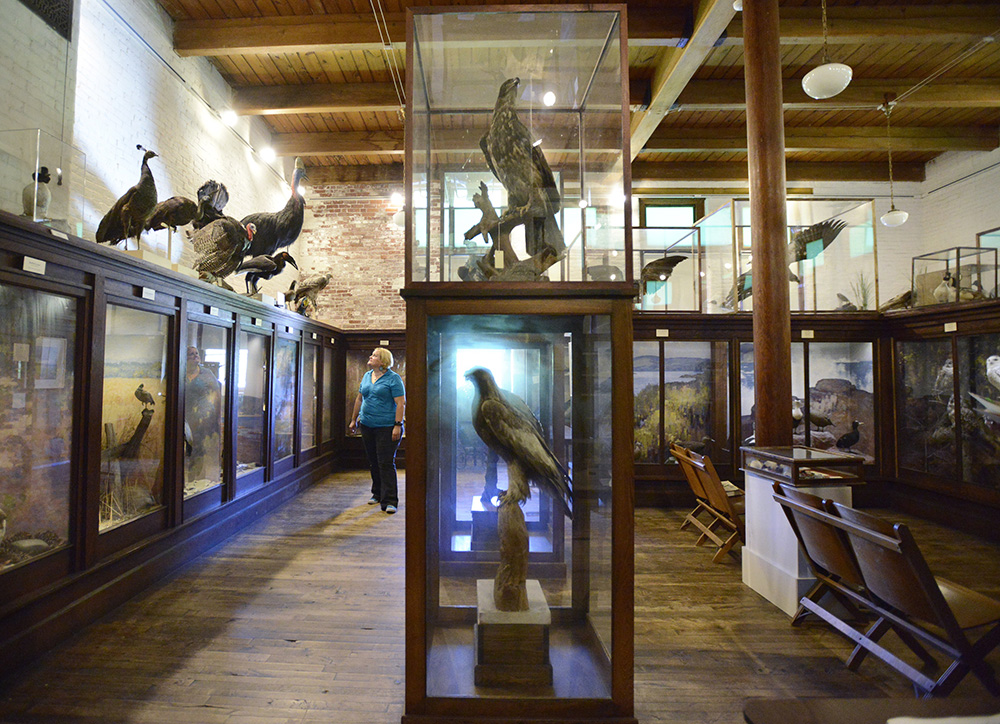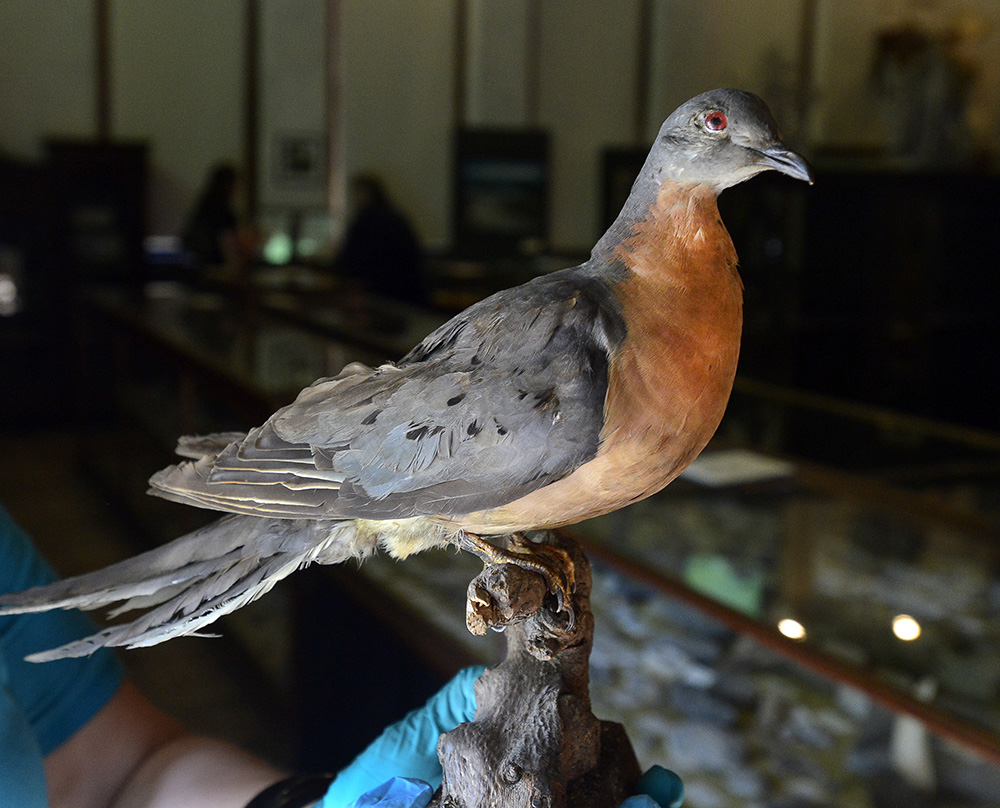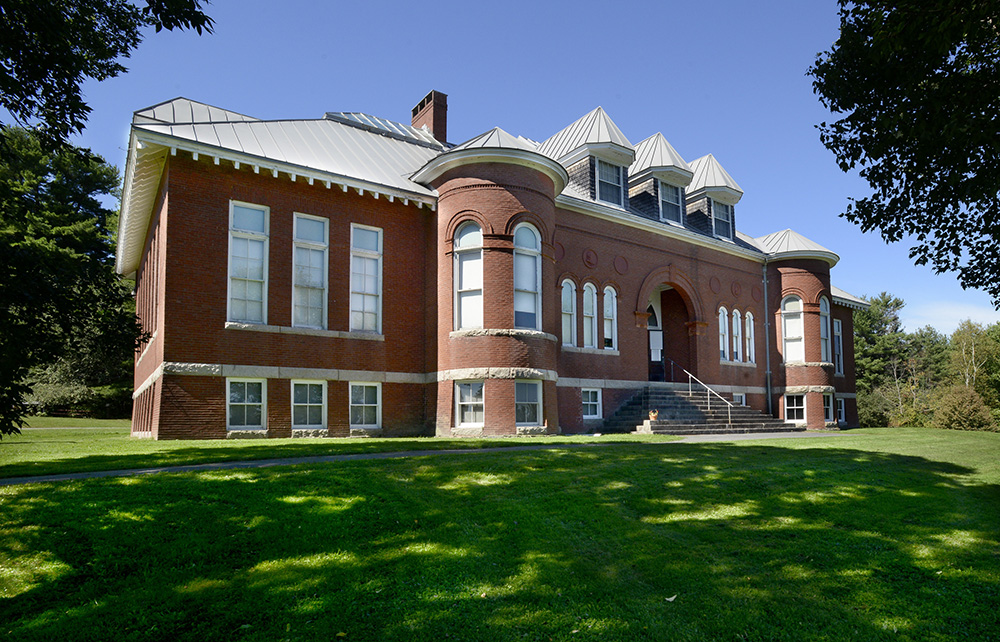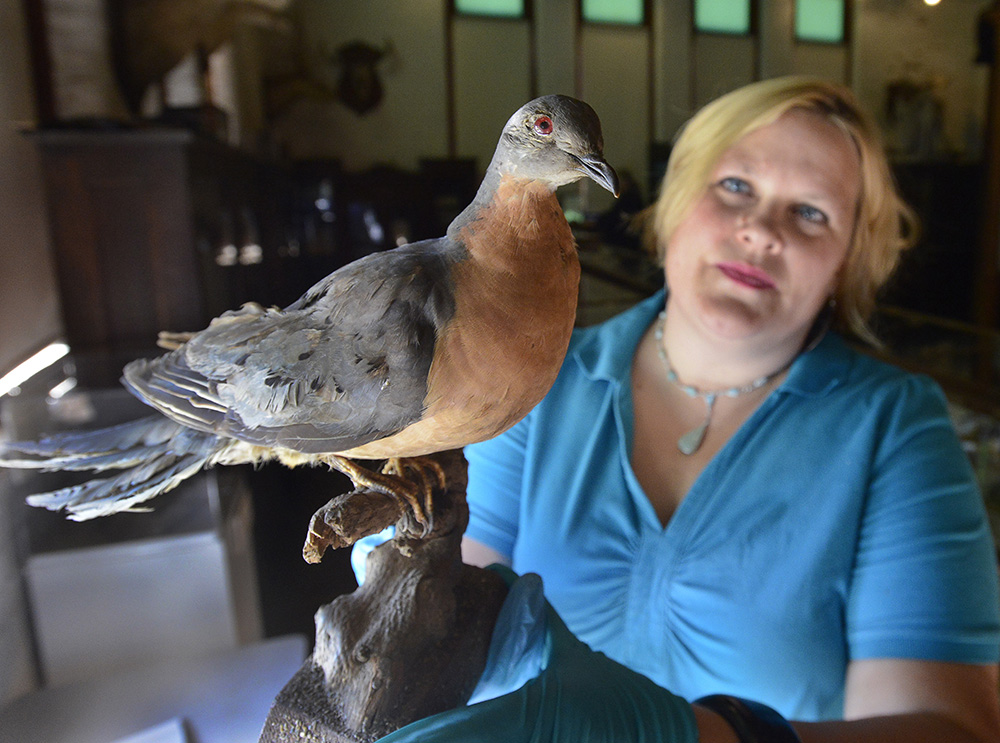HINCKLEY — Across Maine and the nation, commemorative events are calling attention to endangered and threatened species in memory of Martha, last of the now-extinct passenger pigeons who died 100 years ago this month.
Passenger pigeons were once the most abundant bird in North America and one of the most prolific on the planet. Three billion to five billion filled the skies of North America in the late 19th century before the species was driven to extinction in a 20-year span.
A website created by The Chicago Academy of Sciences offers the story of Martha and the fall of the passenger pigeon as well as lessons for how to help conserve endangered species today, at passengerpigeon.org.
In Maine at the L.C. Bates Museum in Hinckley, one of the state’s largest natural history archives, the story of Martha is being told in a display and through educational programs for children.
The museum, filled with century-old collections of plants, rocks and mounted animals, is dark, to keep the mounts from fading from daylight. In a far corner, a mounted passenger pigeon from the 1890s sits with little fanfare. But the bird’s story is one the docents tell often.
At the entrance they hand visitors a postcard of this mounted pigeon, a reminder of how beautiful its orange and brown feathers were, and how quickly it was driven to extinction.
“They darkened the sky when the settlers arrived,” said museum director Deborah Staber. “Market hunters netted, shot and clubbed the birds by the railroad-car load. They were selling them for as little as a penny for food in the 1890s. The over-hunting combined with the loss of habitat led to the extinction.”
Serena Sanborn, the museum’s educator, said the birds also were valued by European settlers for bedding and hats. But as the bird was hunted and forestland cleared for farms, the numbers declined.
A report from John James Audubon in the early 1800s that Sanborn shares with visitors describes a flock outside Louisville that obscured the light in the sky for miles at a time:
“Before sunset I reached Louisville, a distance from Hardensburgh of 55 miles,” Audubon wrote. “The pigeons were still passing in undiminished numbers, and continued to do so for three days in succession.”
This weekend Sanborn led children through an endangered species treasure hunt at the Hinckley museum, requiring that they locate the many endangered species mounts in the museum’s halls. Martha’s lesson is relevant today, Sanborn said.
“It is one of the largest species that went extinct in our (nation’s) lifetime. And it happened so quickly. It’s unprecedented,” she said.
At Maine Audubon in Falmouth last week, staff naturalists joined the Maine Historical Society to tell visitors the story of the passenger pigeon in Maine, as well as similar stories of other, more successful threatened species. The piping plover, the least tern, the bald eagle and puffin are populations that have been threatened, but through conservation work also brought back to bigger numbers.
“Though it’s a sad story, it’s a lesson for us today about the importance of conservation and about how the pigeon’s extinction was directly caused by humans,” said Maine Audubon spokeswoman Michelle Smith.
“We have learned a lot over the past 100 years about conservation. And the story of the passenger pigeon is a reminder that we have an obligation to conserve our wildlife and habitat.”
Copy the Story Link
Send questions/comments to the editors.







Success. Please wait for the page to reload. If the page does not reload within 5 seconds, please refresh the page.
Enter your email and password to access comments.
Hi, to comment on stories you must . This profile is in addition to your subscription and website login.
Already have a commenting profile? .
Invalid username/password.
Please check your email to confirm and complete your registration.
Only subscribers are eligible to post comments. Please subscribe or login first for digital access. Here’s why.
Use the form below to reset your password. When you've submitted your account email, we will send an email with a reset code.